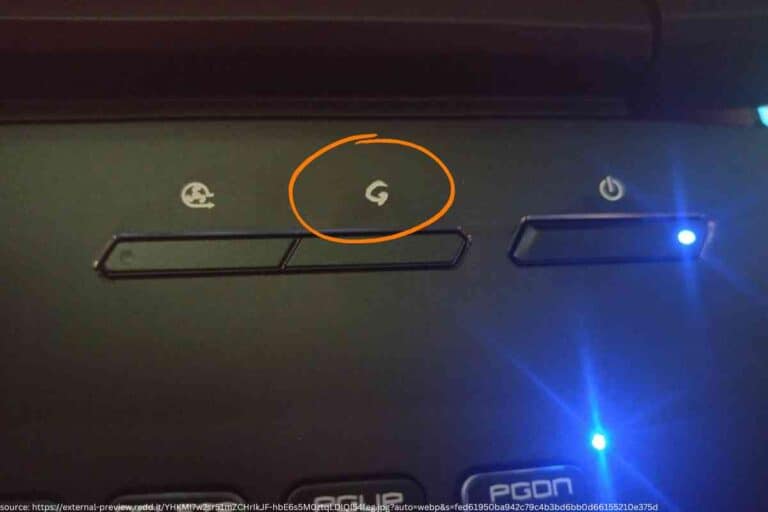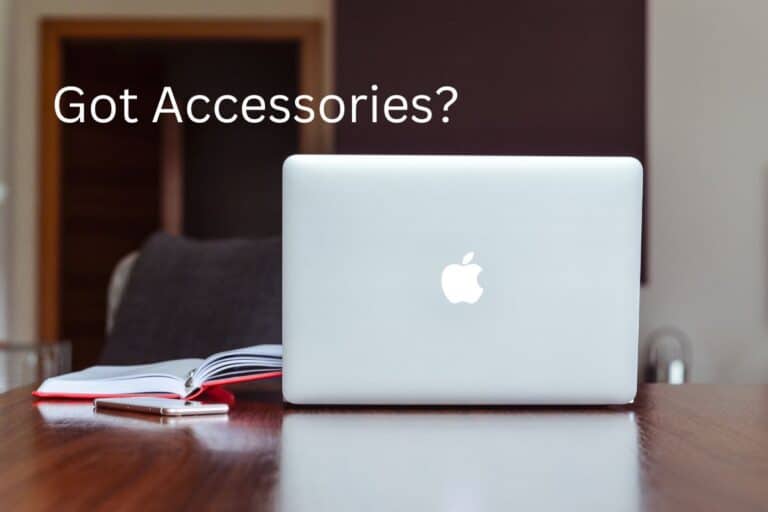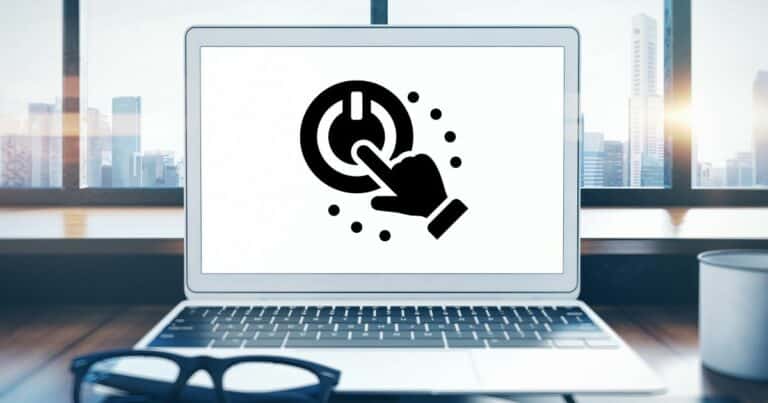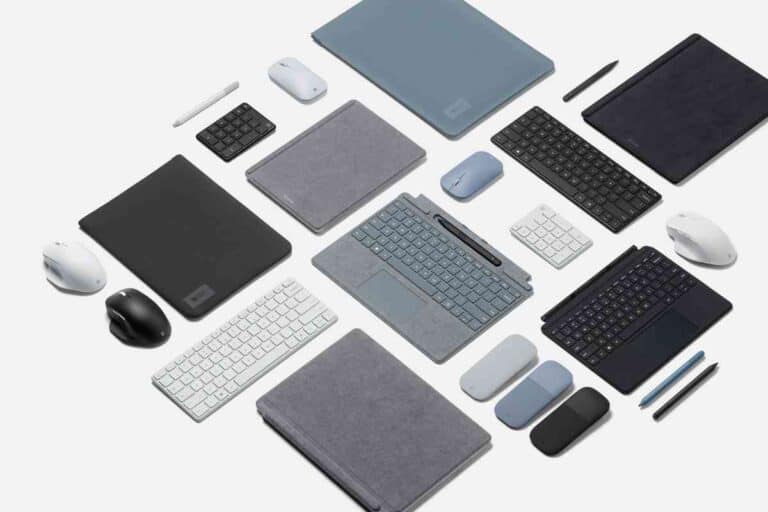Here’s How To Clean Boot Windows 10 And Troubleshoot Like A Pro
If you are having problems with your Windows computer, I’ll tell you how to clean boot Windows 10 and troubleshoot like a pro.

How do you do a clean boot on Windows 10?
You can clean boot Windows 10 by doing the following:
- Sign in as an administrator.
- Go to Services in System Configuration.
- Check Hide all Microsoft services.
- Choose Disable all and Apply.
- Disable all enabled Startup items in Task Manager.
- Choose OK in System Configuration and restart your computer.
I’ve experienced countless software issues that have caused performance problems on my computer. Fortunately, fixing problems doesn’t always require complicated diagnosis procedures. If you follow a few simple steps, you can clean boot Windows 10 and troubleshoot like a professional.
Why Should I Run A Clean Boot Of Windows 10?
Since I like to work on many projects at once, I often have multiple applications running on my computer at the same time.
Unfortunately, some applications can have problems when they run at the same time as other applications.
Certain applications might run processes that use or store data in the same folders as other applications.
There might also be programming conflicts that cause one or both applications to run in an unexpected way.
Though I generally don’t mind when my computer slows down a little bit, it can be frustrating when it becomes too slow.
Diagnosing and resolving issues involved with conflicting software can be complicated.
If you are experiencing performance issues with a particular application, a good way to diagnose and fix problems is to perform a clean boot of Windows.
A clean boot of Windows runs a minimal set of startup programs so you can isolate the problem by running disabled programs one at a time.
Even if you’ve tried closing all your programs through the taskbar and task manager, some processes might continue to run or cannot easily be closed.

Some processes may not appear in the taskbar, so it can be more efficient to clean boot Windows to make sure all non-critical software processes are truly stopped.
How Do I Clean Boot Windows 10?
You can clean boot Windows 10 by following the steps below.
- Create an administrator account in Windows if you don’t already have one.
- Sign in to your computer with the Windows administrator account.
- Go to the System Configuration menu by typing “System Configuration” or “msconfig” in the Windows search bar.
- In the System Configuration window that appears, go to the Service tab.
- Check the box in the bottom left corner next to Hide all Microsoft services.
- Click the Disable all button on the right side of the System Configuration window.
- Click Apply.
- Go to the Startup tab in the System Configuration window.
- Click the blue link that says open the Open Task Manager.
- Highlight each item that shows Enabled under Status, then click the Disable button at the bottom right of the Task Manager window.
- Make sure to take note of the items that were disabled so you can enable them again later.
- Close the Task Manager and go back to the Startup tab in the System Configuration window.
- Click the OK button at the bottom of the Startup tab.
- Restart your computer by clicking the Start button and selecting Restart in the power options.
After you clean boot Windows, you should try to recreate the problems you experienced before the clean boot.
If you were unable to run or install applications before the clean boot, you should try again to run or install them.
If the problem no longer exists after the clean boot, you should try turning on services in the Task Manager one at a time to see if the problem occurs after each item is enabled.
If the problem occurs after a particular service is enabled, you can stop using the service when your computer runs normally again.
Since it can take a long time to enable each service one at a time, you can use a more efficient method to re-enable and test services.
You can speed up the process by re-enabling half of the services and testing for the problem.
If the problem occurs, you can rule out the disabled services and disable half the items that were enabled when the problem occurred.
You should now have about a quarter of your normally-enabled items enabled and the rest disabled.
If a set of enabled items doesn’t produce the problem, you can disable those items and test the previously-disabled items by enabling them.
If the problem occurs with the remaining enabled items, you can continue the process until the problematic item is isolated.
Finding an offending Startup item can sometimes take a while, but if you are persistent and go through the steps in an orderly manner, you should be able to fix your problems in no time.
You can re-enable all the Startup items except the offending item and then restart your computer normally.
Follow the steps below to start up your computer normally.
- Go to the System Configuration menu by typing “System Configuration” or “msconfig” in the Windows search bar.
- In the System Configuration window that appears, go to the Service tab.
- Go to the General tab and make sure Normal startup is selected.
- Go to the Services tab and clear the box next to Hide all Microsoft services.
- Choose Enable all and click Apply.
- Open the Task Manager and go to the Startup tab.
- Go to an item you previously disabled, highlight it, and click the Enable button at the bottom right.
- Repeat the step above for all items that were previously disabled.
- Restart your computer.
If you disabled Load system services in System Configuration, you may not be able to install applications.

If you want to use the Windows Installer when your system services are disabled, you can manually start the system installer by following the steps below.
- Type “Computer Management” in the Windows search bar and open the Computer Management window.
- Go to Services and Application and expand it by clicking the arrow.
- Choose Services.
- In the panel with details, right-click the Windows installer and choose Start.
If you are using Windows on a tablet, you can tap your screen wherever “click” is mentioned and swipe down wherever “right-click” is mentioned.
What Else Can I Do To Improve Computer Performance?
If you’ve worked with computers for as long as I have, you’ll know how complicated computers can be when it comes to fixing problems and optimizing performance.
Running a clean boot of Windows 10 might only be able to fix a limited set of problems.
If running a clean boot of Windows doesn’t resolve your software problem, there are a few other similar easy solutions you can perform to fix problems and improve processing speeds.
Before taking your computer to an expensive technician, I’d recommend trying some of the solutions below to take care of computer problems on your own.
Run A System Refresh
If your problems run deeper than application conflicts, refreshing your computer might work to fix the problem.
A system refresh involves reinstalling the Windows operating system while keeping all your files and applications in place.
It can help to clear up processes and data that might conflict with certain applications on your computer.
I like to perform a system refresh every once in a while whether I’m having computer problems or not.
A system refresh is a great way for me to maintain solid performance of my computer with minimal effort.
Follow the steps below to perform a system refresh of your Windows computer.
- Type “Recovery options” in the Windows search bar and select the Recovery options to open the Recovery window.
- You can also open the Recovery options in the Settings panel under the Update & Security section.
- In the Recovery options window, click the Get started button under Reset this PC.
- Choose the Keep my files option.
- Follow the instructions on the screen to refresh your Windows computer.
Run A Factory Reset
Though a system refresh can often work to resolve performance issues, there is another option that can be more effective for your computer problems.
Performing a factory reset gives your computer a clean slate and basically lets it run as if it were new.
A factory reset can help to clear troublesome files, settings, and data structures the system refresh wasn’t able to clear.
Malware that couldn’t be removed with antivirus software can also be removed through a factory reset.
Before performing a factory reset, it’s important to know your files and applications will be deleted, so you should back up all your important data before starting the reset.
It can be scary to perform a factory reset when I have loads of important files and data in my computer.
After running numerous factory resets on my computer, I’ve gotten used to all the steps involved.
I streamlined the process by creating one folder for my most important files and regularly backing it up to a solid state drive.
Though a factory reset might seem like a drastic measure, it will often do a much better job at fixing computer problems compared to a system refresh.
You can perform a factory reset of your Windows computer by following the steps below.
- Type “Recovery options” in the Windows search bar and select the Recovery options to open the Recovery window.
- You can also open the Recovery options in the Settings panel under the Update & Security section.
- In the Recovery options window, click the Get started button under Reset this PC.
- Choose the Remove everything option.
- Follow the instructions on the screen to reset your Windows computer.

Check External Issues
Some problems I experience involve basic oversights that are right in front of me.
Before panicking and going through a bunch of fixes that may be unnecessary, you should carefully check external issues that might be giving you problems.
If the problem is related to power or charging, there could be an issue with your computer’s battery, power adapter, or related cables.
You can test your accessories with other devices and replace the accessories if they are also faulty on another device.
There might also be a problem with the AC power outlet, so you should try plugging in a different device into the outlet to see if the problem occurs on the other device.
Update Your Software
To make sure software is optimized and can run to the best of its ability, you should try to update all your software to the latest available versions.
For smoother overall functionality of your Windows computer, you should update the operating system and any other system-related files such as firmware and drivers.
If you have a newer computer, it will likely work well with the latest versions of most software.
However, you should keep in mind that certain software may require processing power and other specifications that go beyond what your computer has to offer.
If you experience reduced performance with any applications, you should carefully check the software requirements of each application and make sure your computer’s specifications can meet those requirements.
If your computer has problems after running a factory reset, checking external hardware, and updating software, there might be a problem with one or more of your internal hardware components.
Upgrade Hardware
Before giving up on your computer and buying a new one, you should isolate individual components to see if one is causing problems.
If you’re experiencing graphics-related problems with your computer, you might have a defective graphics card or a faulty monitor.
To rule out the possibility of having a faulty monitor, you can try connecting your computer to an external monitor to see if the problem still exists.
If you don’t see the problems on the external monitor, you should have your computer checked out at a certified repair center.
Having repairs done to major parts of a computer can be expensive, so I try to cut corners whenever possible to get by for as long as I can.
When I have problems with a computer monitor, but don’t want the hassle and expense of getting the monitor fixed, I’ll often just use my computer on an external monitor and save my money to buy a new computer later.
The cost of repairing a monitor and many other hardware components can be quite high and make the repairs not worth doing.
Before having components replaced, you should look into the cost at different repair centers and compare the overall cost to buying a new computer.
A new computer would not only have working hardware components, it might also have better overall specifications than your problematic computer.
Software, hardware, and general technology are constantly changing, so it’s unlikely your computer will keep running as smoothly as when you bought it.
Even when I run a basic program on an older computer, it can often run so slow that it’s basically not worth using.
I used to set aside older computers to play video and other media files I thought it could handle, but since video file and player technologies constantly change, it can quickly become too much for older computers to handle.
As software gets more advanced and hardware gets more outdated, a computer’s overall performance will usually deteriorate over time.
Though running a clean boot of Windows 10 may help you troubleshoot and resolve certain issues, it’s only a matter of time before you need to replace hardware components or the entire computer.
If your computer doesn’t meet the minimum requirements for RAM or storage space, you should look into upgrading the RAM and storage space in your computer.
Though it might be difficult and costly to replace other components like the CPU and graphics card, doing so might help to improve the performance of your computer.
If you want to upgrade your graphics card without replacing the internal one, you can try using an external graphics card dock that can be plugged into one of the ports on your computer.
Use Optimization Tools
Though I don’t mind upgrading components when absolutely needed, I try to boost the performance of existing components as much as I can before shelling out dollars.
To make more efficient use of RAM and storage drives, you can use Windows tools like “ReadyBoost” and “Defragment and Optimize Drives” to make your RAM and storage drives more efficient.
ReadyBoost can help get more out of your existing RAM and may reduce the need for you to upgrade your physical RAM.
Follow the steps below to activate ReadyBoost in Windows 10.
- Plug an unused USB drive into an available port on your computer.
- Go to This PC or My Computer.
- Right-click the icon for the USB drive you plugged in and choose Properties in the menu that appears.
- Go to the ReadyBoost tab and reserve space for ReadyBoost to be used in the USB drive.
- If you don’t want to use the USB drive for anything else, choose the “Dedicate this device to ReadyBoost” option.
- Select OK and wait for the USB drive to be configured with ReadyBoost.
You can monitor the performance of ReadyBoost by following the steps below.
- Open Windows Explorer and right-click on the icon for This PC.
- Go to Manage.
- Go to Performance.
- Go to Monitoring Tools.
- Go to Performance Monitor.
- Alternatively, you can go to the Windows search bar and enter “Performance Monitor” to load the Performance Monitor.
- In the left pane, choose Performance Monitor.
- Select the green plus (+) button.
- In the Add Counters window, highlight ReadyBoost Cache.
- Select Add.
- Select OK.
If you find ReadyBoost to be ineffective, you can follow the steps below to stop using ReadyBoost.
- Go to This PC or My Computer.
- Right-click the icon for the USB drive you plugged in and choose Properties in the menu that appears.
- Choose the “Do not use this device” option.
- Select OK to activate the changes.
- Delete the ReadyBoost files to clear space in the USB drive.
The “Defragment and Optimize Drives” tool can help to restructure your computer’s data so it can be accessed more efficiently.
If your data is very spread out and cluttered, you may experience faster performance after using the tool.
Follow the steps below to use the Defragment and Optimize Drives tool in Windows 10.
- Enter “Defragment and Optimize Drives” in the Windows search bar to open the Defragment and Optimize Drives window.
- Choose the drive you would like to optimize (the C: drive is typically a computer’s main drive).
- Click the Optimize button to start the process.
Run Antivirus Software
Malware can cause tons of problems for just about any computer.
Malware often finds its way into deep parts of a computer that can affect key system processes and compromise your security.
Since I try to minimize the amount of software that runs on my computer, I don’t always like to run antivirus software.
However, there are times when running antivirus software is the fastest way for me to resolve my computer performance issues.
Key Takeaways
- Running a clean boot of Windows 10 can help resolve software conflicts that diminish a computer’s performance.
- You can clean boot Windows 10 by disabling all enabled Startup processes in the Task Manager and restarting the computer.
- You can troubleshoot like a professional by re-enabling Startup processes until the offending process is isolated.
- Other methods to improve the performance of a Windows computer include running a system refresh, updating software, upgrading hardware, using optimization tools, and running antivirus software.






